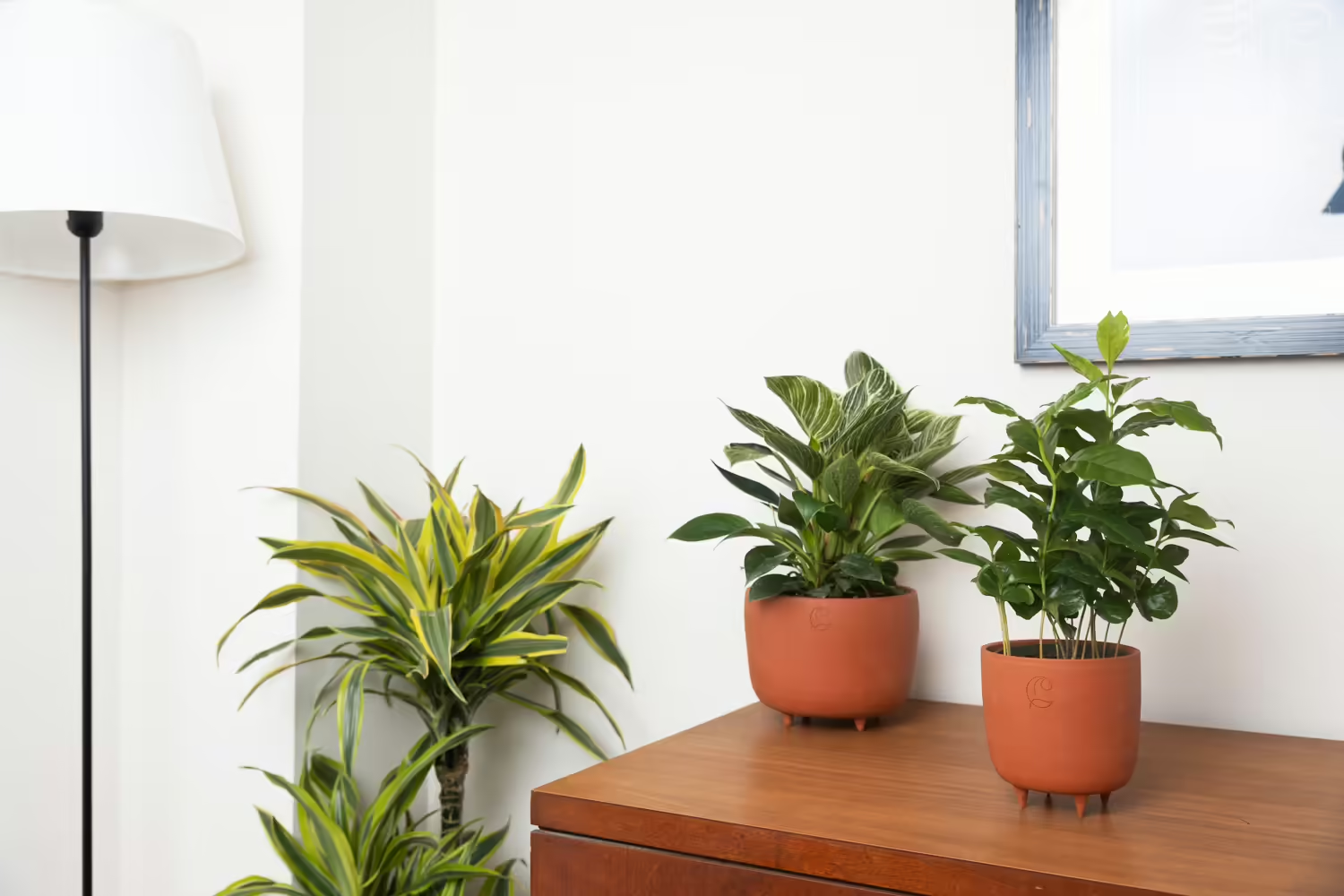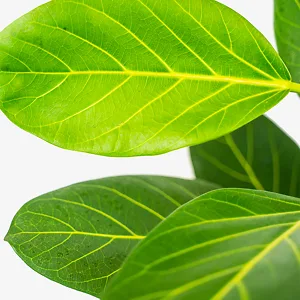
Written by s • Basic Care of Houseplants
Bringing living green inside your house is a great way to improve your indoor space. Not only do plants add that special something to your rooms, softening the sharp angles of furniture, and filling corners effectively, but multiple studies have shown their amazing ability to remove polluting chemicals from the air. With plants in it, the air inside your home will be cleaner, and be more humid, so that causes of allergies and asthma are removed. All your family will enjoy the healthier environment houseplants create.
Sometimes people are put off the idea of growing plants indoors, but it is not difficult. If you match the plant to the spot you want to grow it in, and give them some very basic care, plants will respond by thriving indoors, and you will easily enjoy all the benefits they bring. So here are some basic principles to follow that will make houseplants a joy to share your space with.
Caring For Houseplants
– Match the plant to the light
– Use a suitable container and growing medium
– Give the right amount of water
– Remember to feed your plants
– Watch for pests
Match the Plant to the Available Light
Light is a basic requirement of plants – their green leaves make food for them when they are in light – but plants vary in how much they need. Consider the light levels in the spot you want a plant before you buy it – this is much easier than trying to find a suitable location for a plant you already have. We can divide houseplants into three broad groups, depending on how much light they need.
Some need direct sun for at least part of the day, for example, the Ponytail Palm, which is also very drought tolerant. Because these spots are not very common in many homes, most plants grown indoors prefer bright, indirect light, and the majority thrive in those conditions, so your choices are wide open. The Areca Palm and the Weeping Fig Tree are both plants that do best in bright light, but not in direct sun. Our choices are more limited when we have darker corners, but plants like the Dwarf Date Palm, or the Madagascar Dragon Tree are good choices for those spots. Read the descriptions of the plants carefully, and choose accordingly.
Use a Suitable Container and Soil
The most important single thing to get right for your houseplants is to use a container with at least one drainage hole. It can be plastic or clay, plain or decorative, but that drainage hole is vital. If water cannot flow out of the pot, your plant can easily drown, and even if you do manage to avoid that, the minerals from water and fertilizer will gradually built up, making it harder and harder for the plants to take up water, and causing the tips of the leaves to wither and brown.
Every time you water, give enough so that some flows out the drainage hole – this prevents mineral build-up. Except for a few water-loving plants, like Papyrus for example, never leave a plant sitting in a saucer of water. If the pot you want to use has no drainage, no problem – find a plain plastic pot that will fit inside it and plant in that. If you put a couple of inches of gravel in the bottom of the outer pot, the drainage water will go there, meaning you don’t have to keep emptying the outer pot. As that water evaporates, it makes humidity around the plant (and in your home) which is always a good thing.
Always use a prepared potting soil for your plants, not garden soil. These soils are designed to both hold water and let air into the soil – garden soil is too heavy and dense to do that when put into a pot. If your plant needs to dry out between watering, a soil for Cactus and Succulents can be an appropriate choice, otherwise use one for indoor foliage plants.
Give the Right Amount of Water
Most houseplants suffer or die from too much water, not too little, so always be cautious about watering. This doesn’t mean just give a little. You should always water thoroughly, until some comes out of the drainage hole, every time you water. No, the secret is to let the soil dry enough between each watering. As a general rule, let the top quarter of the pot dry – the upper few inches.
Look carefully at the directions for growing your chosen plant, because some plants like to dry out more, perhaps for three-quarters of the pot, and for some, letting them dry completely is best. If your plant is one that needs to dry right out, then using clay pots rather than plastic will speed up the drying, so they don’t sit in wet soil too long. Using that Cactus soil will also benefit plants that prefer to be mostly dry.
In winter light levels are lower generally, so plants will grow very little. While in this state they can’t use water, so always keep your plants drier in winter than at other times. If a plant normally needs water when the top couple of inches are dry, then in winter make that the top 5 or 6 inches instead.
Remember to Feed your Plants
Just because houseplants might grow more slowly than those outdoors, doesn’t mean they don’t need some feeding. Many plants languish in a corner, with yellow leaves, because they don’t get enough to eat. Use a general-purpose liquid fertilizer for foliage houseplants, and only feed in spring and summer. Unless you are watering more than once a week, use fertilizer at every watering, but make it half the recommended strength. Don’t overwater just because you think it is needed – always fit it into your regular watering routine.
Watch for Pests
Most popular houseplants are relatively pest and disease-proof, and almost all the problems that might develop are from light or watering issues. But pests can sometimes develop too. Regular misting with water, and washing the foliage, are good ways to reduce the risk of pests – taking your plants into the shower, and giving them a good cold wash is a great thing to do every few weeks. Learn the early signs of the most likely pests, as they are much easier to control early on, than if you wait for them to reproduce and spread.
Houseplants are always a splendid feature in a room, and if you follow these basic rules you will find them easy to grow. Once you get hooked you will find you are soon living in an indoor jungle of your own creation!






